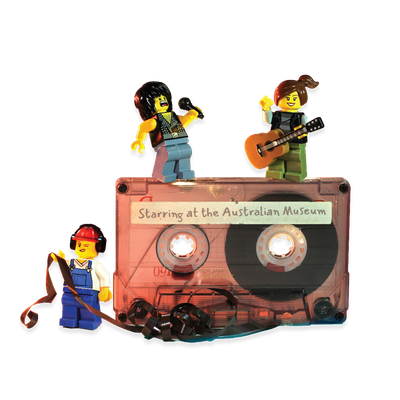Your search returned 102 results
By Page Type
By Tag
- All
- fish (966)
- blog (696)
- fishes of sydney harbour (401)
- First Nations (299)
- Blog (236)
- AMRI (169)
- archives (164)
- Eureka Prizes (146)
- Aboriginal and Torres Strait Islander (135)
- insect (126)
- Ichthyology (124)
- geoscience (109)
- minerals (102)
- climate change (99)
- podcast (94)
- Fish (91)
- Anthropology (89)
- International collections (80)
- Minerals Gallery (78)
- wildlife of sydney (78)
- Labridae (77)
- frog (74)
- gemstone (70)
- photography (66)
- history (64)
- Mollusca (60)
- gem (59)
- staff (59)
- Birds (56)
- Gems (56)
- Indonesia (56)
- education (56)
- shark (55)
- AMplify (54)
- people (53)
- earth sciences (50)
- exhibition (50)
- past exhibitions (50)
- Gobiidae (48)
- sustainability (46)
- Pomacentridae (45)
- Serranidae (44)
- lifelong learning (42)
- science (42)
- Earth and Environmental Science (41)
- Syngnathidae (41)
- Ancient Egypt (40)
- Bali (40)
- bird (40)
- dangerous australians (40)
-
Glitter restored – The Holtermann 'Nugget'
https://australian.museum/learn/news/blog/glitter-restored-the-holtermann-nugget/Did you know we have a newly-restored replica of the largest single mass of gold ever found?
-
Learn how to classify fossils
https://australian.museum/learn/teachers/learning/fossil-classification/Learn the difference between impression, mineralised and trace fossils and begin to classify your specimens.
-
Learn how to classify rocks
https://australian.museum/learn/teachers/learning/rock-classification/Can you tell the difference between sedimentary, igneous and metamorphic rocks? Use this series of posters to learn how to classify rocks and tell the difference between them!
-
Make your own pocket volcano
https://australian.museum/learn/teachers/learning/pocket-volcano/Watch this video to learn what happens inside a volcano just before it erupts and make your own pocket volcano in the classroom or at home!
-
The Australian Museum Minerals Gallery
https://australian.museum/publications/minerals/minerals-gallery/The Australian Museum Minerals Gallery is a brilliant showcase of the full breadth of the Australian Museum’s collections in the Earth Sciences.
-
Albert Chapman Collection
https://australian.museum/publications/minerals/albert-chapman-collection/The Albert Chapman Collection is renowned worldwide for its mineralogical diversity, crystal perfection, aesthetic appeal and high Australian content.
-
Earth science
https://australian.museum/learn/minerals/The Mineralogy and Palaeontology collections include rocks, minerals, gemstones and fossils, and reveal how the earth was formed.
-
Geological deposits and resources
https://australian.museum/learn/minerals/geological-deposits/Geology is an important part of our economy and industry.
-
Fluorite
https://australian.museum/learn/minerals/gemstones/fluorite/Facts about Fluorite.
-
Labradorite
https://australian.museum/learn/minerals/gemstones/labradorite/Facts about Labradorite
-
Discover more
2025 Australian Geographic Nature Photographer of the Year
Special exhibition
Free entry
Now open -
Discover more
Unfinished Business
Special exhibition
Free entry
Now open -
Discover more
Wansolmoana
Permanent exhibition
Free entry
Open daily -
Find out more
Burra
Permanent kids learning space
Free entry
10am - 4.30pm![]()
-
Discover more
Minerals
Permanent exhibition
Free entry
Open daily![]()




